
|
Abstract:
Introduction to the life of the Báb, with historical photo-realistic illustrations by Romanian artist Simina Boicu Rahmatian.
Notes:
Mirrored from bahaiworld.bahai.org, where this article is also available in mobile-device and PDF formats.
|
In country after country, the bicentenary of the Birth of the Báb has been celebrated by people representing the rich diversity of the human race, giving rise to countless expressions of art, music, and acts of selfless service in honor of His life and teachings. As part of the efflorescence of activities during this period, Romanian artist Simina Boicu Rahmatian has prepared twenty-five illustrations that depict some of the most significant sites related to the brief but stirring history of the Bábí Faith. The hand-drawn illustrations that follow invite us to immerse ourselves in the "marvelous happenings that...heralded the advent of the Founder of the Bábí Dispensation, the dramatic circumstances of His own eventful life, the miraculous tragedy of His martyrdom, the magic of His influence exerted on the most eminent and powerful among His countrymen." The sepia tones transport us back to the nineteenth century. The contrast between light and shadow brings to life the buildings, towns and landscapes that form the backdrop against which a new religion came into existence. Yet, these images are seldom accompanied by the silhouettes of human beings; it is we the viewers who are invited to step into those scenes and imagine the settings and circumstances in which an extraordinary chapter of humanity's spiritual evolution unfolded. Some of the illustrations depict historic Oriental edifices: the Shrine of the Imám Ḥusayn in Karbala (no. 5), a well-known mosque and marketplace in Baghdad (no. 10), and the Masjid-i-Vakíl of Shiráz (no. 11). Also depicted are settings of sites more specifically associated with Bábí history: The front door of the Báb's house in Shiráz (no. 3) is shut before our eyes, but our minds are invited in to imagine that fateful evening of May 22, 1844, when the Báb announced to His first disciple that He was the Promised One of Islam and the Gate (Báb, in Arabic) to a new age for humankind. While looking at the desolate castles of Máh-kú and Chihríq (nos. 14 and 15), where the Báb was imprisoned from 1847 to 1850, we are reminded of His isolation and deprivation; as He wrote, "there is not at night even a lighted lamp." The sun-drenched barrack square of Ṭabríz (no. 20), where the Báb was executed, calls to our minds that unique historic moment when He, the target of hundreds of bullets, was nowhere to be found after the thick cloud of smoke cleared. Thousands, crowded around the city square, witnessed that remarkable scene. Other pictures remind us of the heroism of tens of thousands of His followers who courageously advanced a Cause that was destined to change the world. We visit the Sabzih-Maydán of Tehran (no. 18), where a young Iranian met his death singing a couplet from Rúmí: "In one hand the wine-cup, in one hand the tresses of the Friend. Such a dance in the midst of the market-place is my desire!" We stand before Tehran's Gate of Naw (no. 22), on whose sides the remains of many of the Bábís were hung. We reflect somberly at Zanján's square (no. 21), another theater of a terrible slaughter. In the opening and concluding scenes of the collection, the artist portrays the cypress grove located at the south side of the Shrine of the Báb. The first image (no. 1) depicts the grove as seen from below in the early 1900s; the final image (no. 25) is the view from above that we see today. In the former, we can imagine Bahá'u'lláh standing beside the grove and instructing 'Abdu'l-Bahá to house the remains of the Báb in the land just below those trees. In the latter, we see Bahá'u'lláh's vision of the Shrine of the Báb realized in "the Queen of Carmel enthroned on God's Mountain, crowned in glowing gold, robed in shimmering white, girdled in emerald green, enchanting every eye from air, sea, plain and hill." In the visual journey ahead, we find the embodiment of these poignant words written by Shoghi Effendi in 1944: We behold, as we survey the episodes of this first act of a sublime drama, the figure of its Master Hero, the Báb, arise meteor-like above the horizon of Shíráz, traverse the sombre sky of Persia from south to north, decline with tragic swiftness, and perish in a blaze of glory. We see His satellites, a galaxy of God-intoxicated heroes, mount above that same horizon, irradiate that same incandescent light, burn themselves out with that self-same swiftness, and impart in their turn an added impetus to the steadily gathering momentum of God's nascent Faith. As the world endures a period of heightened crisis, may we be reminded of the extraordinary Figure of the Báb, Who was able to "illuminate a society and an age shrouded in darkness." Julio Savi, May 2020 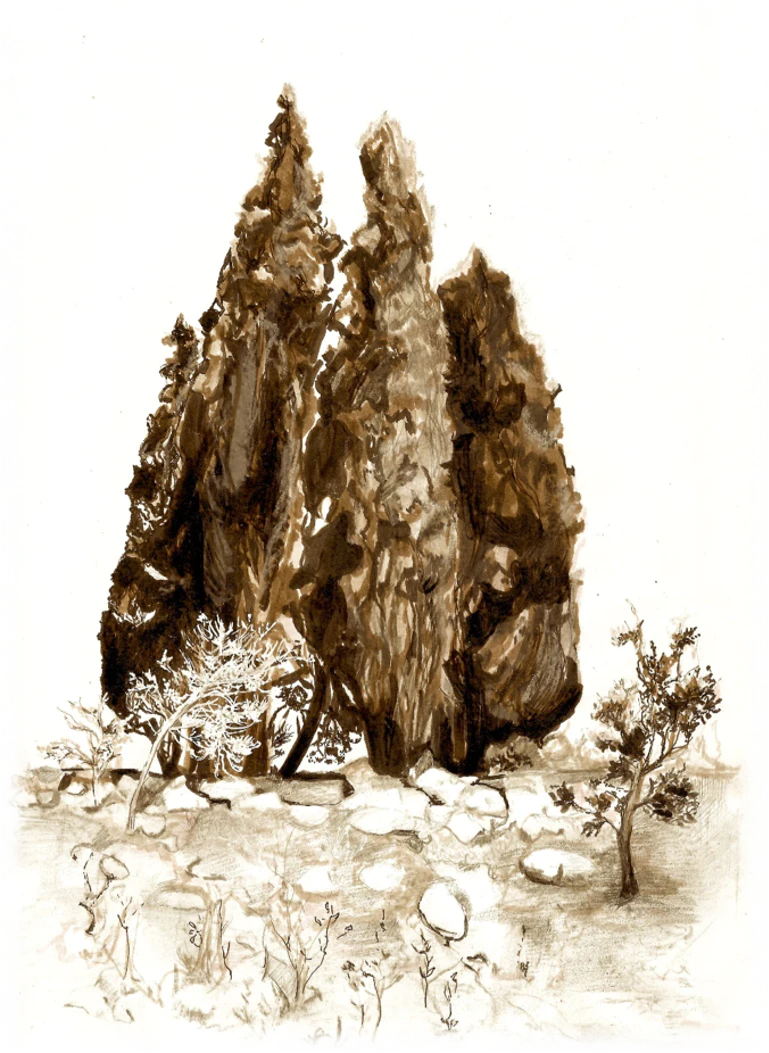 1. Haifa. The cypress grove, which today sits on the south side of the Shrine of the Báb on Mount Carmel, as seen from below in the early 1900s.
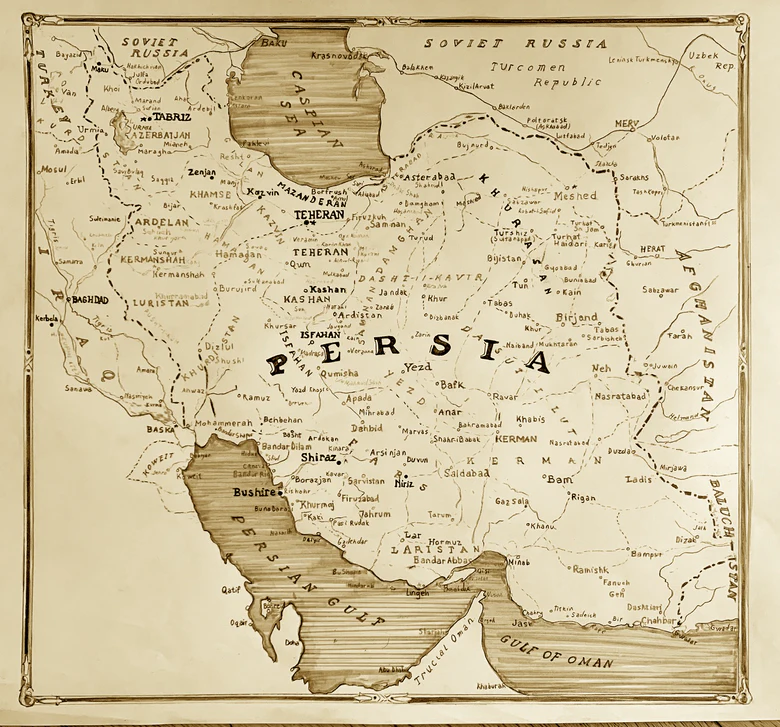 2. A map of Persia, reproduced from the The Dawn-Breakers, an early narrative of Bábí history authored by Nabil-i-A'zam. 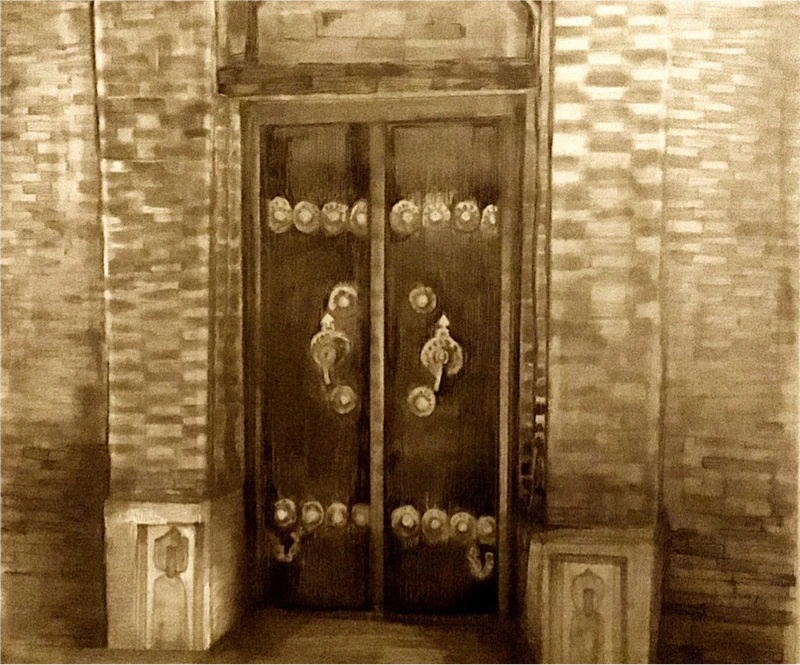 3. Shíráz. The front door of the house of the Báb, where on the evening of May 22, 1844 A.D., He announced to His first follower, Mullá Husayn-i-Bushrú'í, that He was the Promised One of Islam and the Gate (Báb, in Arabic) to a new age for humankind.  4. Karbala. The Madrassa (theological school) of Masjid-i-Dáru'sh-Shafá where many disciples of the Báb stayed, including the young Nabíl-i-A'zam, the future chronicler of the Bábí-Bahá'í Faith. 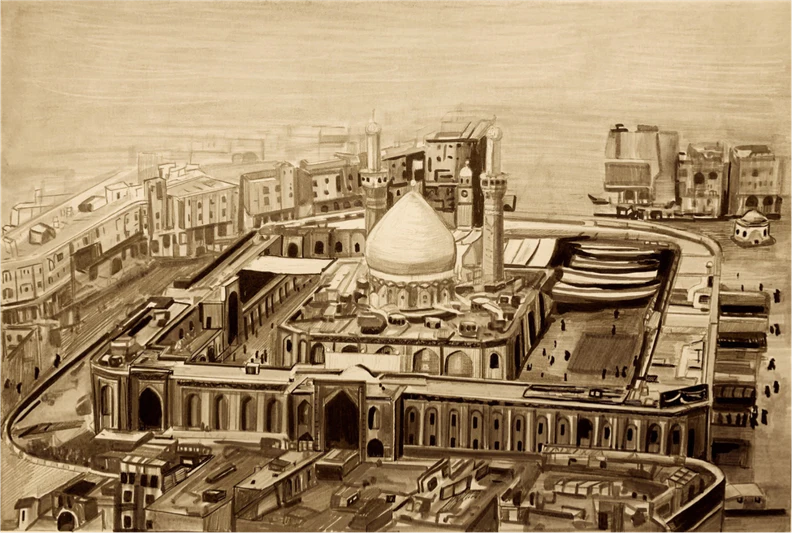 5. Karbala. The shrine of the Imám Ḥusayn, the most venerated Muslim martyr. In the first half of the nineteenth century the Shaykhi school flourished in this religious centre. Its first two masters preached the imminent advent of the Promised One of Islam and prepared their pupils for that event. This school was attended by the first disciples of the Báb and many other prominent figures of Bábí history. 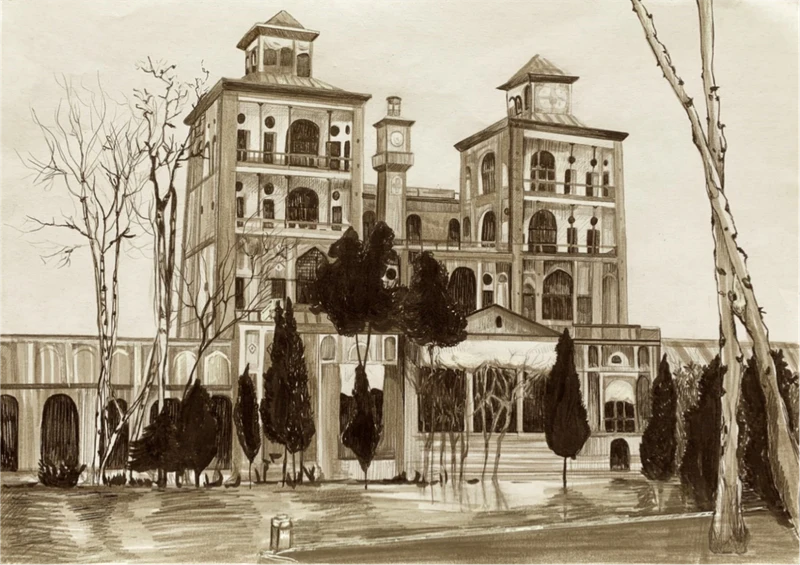 6. Tehran. Golestan Palace (16th-19th century), the royal residence of the Qájár kings Muḥammad Sháh and Náṣiri'd-Dín Sháh. These two Qájár sovereigns ruled Persia in the years during which the Bábí Faith was born and flourished. Their oppressive decrees gave rise to the bloodiest episodes in Bábí history, including the martyrdom of the Báb in Ṭabríz in 1850. 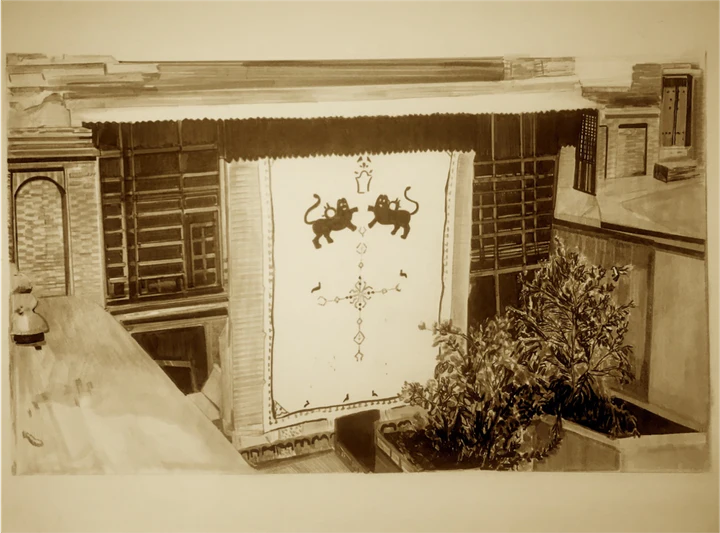 7. Shíráz. The room where the Báb was born on October 20, 1819. He was the descendant of a house that traced its origin to the Prophet Muḥammad Himself 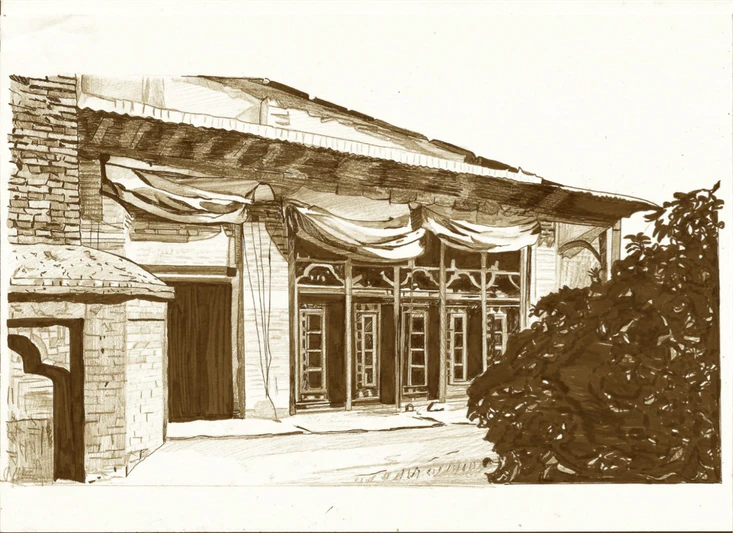 8. Shiraz. The House of the Báb (see also illustration no. 3), where He lived together with His wife and His mother until early 1846.  9. Old Persian vessels in the port of Búshihr where in October 1844, the Báb embarked on His pilgrimage to Mecca. When He was in front of the Kaaba, He declared, before hundreds of pilgrims, that He was the Promised One. He also sent a number of His Writings to the Sheriff of Mecca through one of His disciples. But His announcement went unheeded.  10. Baghdad. A mosque and marketplace. Soon after His Declaration, the Báb sent His first disciples to Persia and Persian Iraq to announce the advent of the Promised One of Islam. 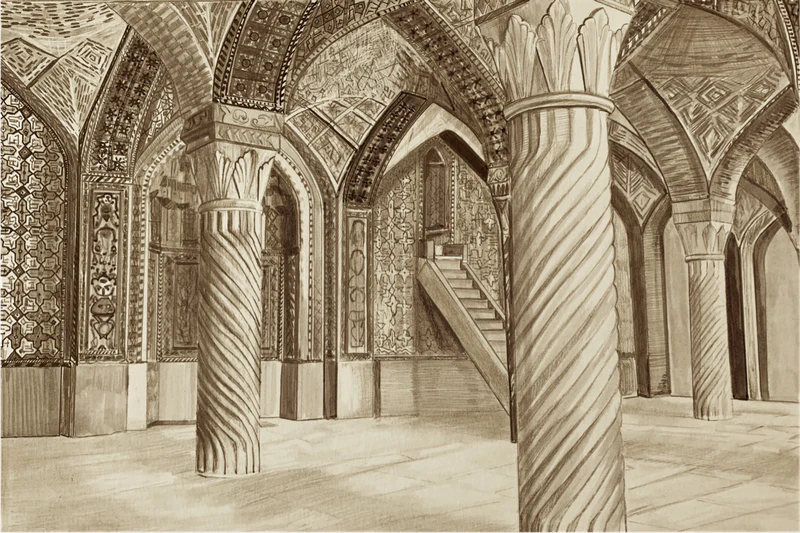 11. Shiráz. Masjid-i-Vakíl. In late June 1845, the Báb returned to Shiráz from His pilgrimage and immediately encountered opposition from the Governor and clergy of the city, where His claims had evoked great turmoil. He was summoned to clarify His position, which He did from the pulpit of this mosque. After that episode, the Báb's fame as a Holy Man grew daily. In September 1846, the Governor expelled the Báb from Shiráz, and He then traveled north to the city of Iṣfáhán.  12. Iṣfáhán. The residence of the Governor. In stark contrast to his counterpart in Shiraz, the Governor of Iṣfáhán became attracted to the personality of the Bab, treated Him with utmost respect and adoration, and accepted the Báb's station as a Divine Messenger. He hosted the Báb in His magnificent residence, known as Imárat-i-Khurshíd, "Palace of the sun." 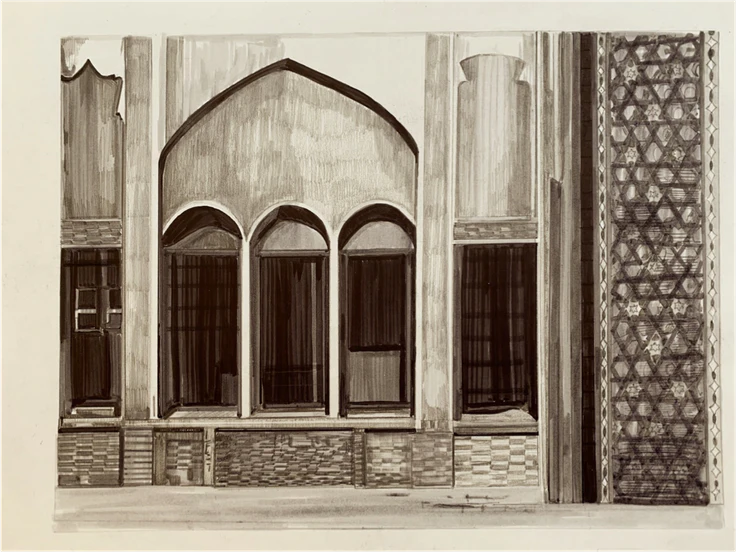 13. Ḥájí Mírzá Janí's house in Káshán. In early 1847 the Governor of Iṣfáhán suddenly passed away. The Báb was then summoned to the capital by Muḥammad Sháh, whose curiosity had been aroused by the enthusiastic descriptions of the Báb that had reached his court. During the Báb's voyage to Tehran, He stopped in Kashán and spent Naw-Rúz (the Persian New-Year) 1847 in this house, which belonged to of one of His disciples, Ḥájí Mírzá Janí, a prominent merchant of that city. 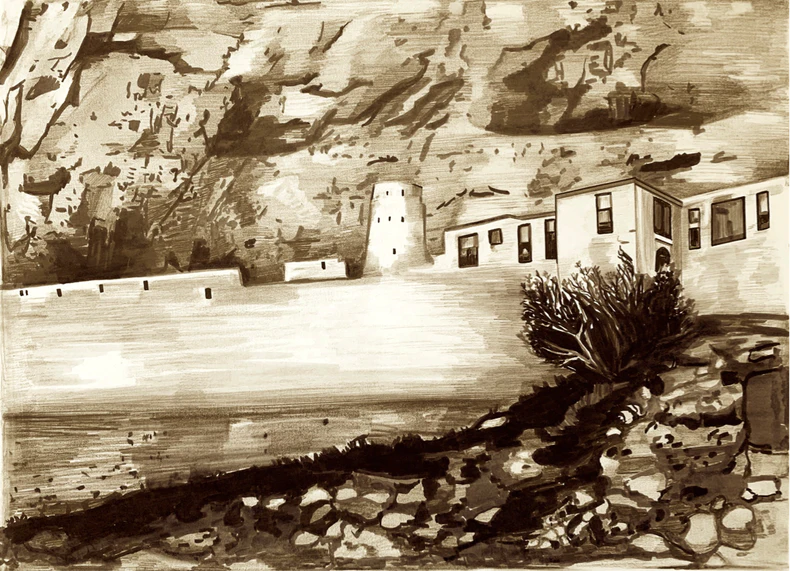 14. The Castle in Máh-Kú. When the Báb neared the Persian capital, Muḥammad Sháh, pressed by his jealous and suspicious Grand Vizier, decided not to receive Him and, instead, exiled Him to the remote castle of Máh-Kú. The custodian of the castle was instructed to keep the Báb strictly isolated under close surveillance. 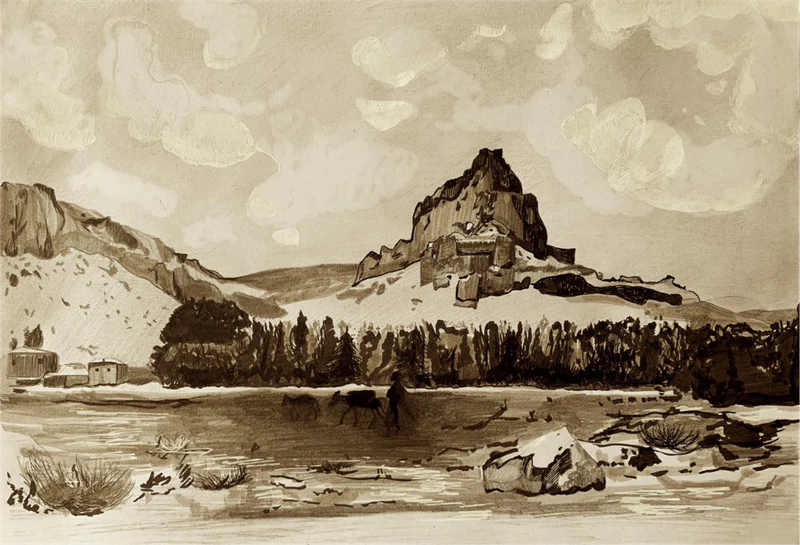 15. The Castle in Chihríq. In April 1848 the Báb was transferred from Máh-Kú to the even more remote Castle of Chihríq, by order of the Grand Vizier. The Báb remained in that Castle from 1848 to 1850. 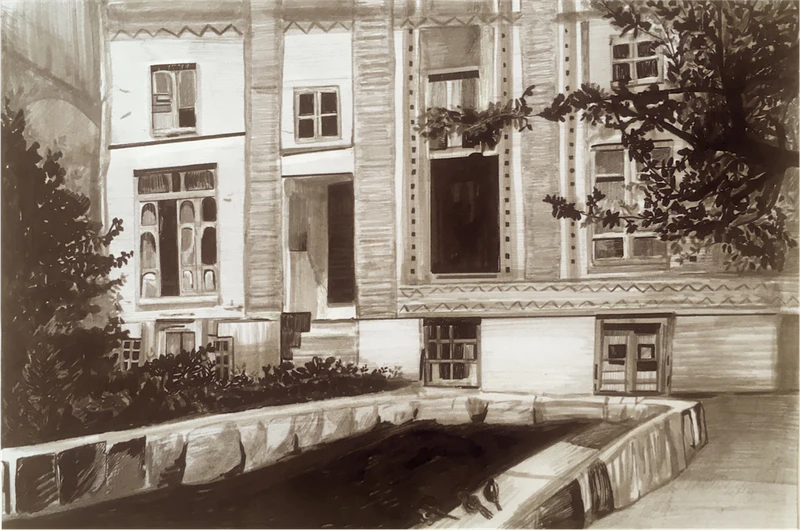 16. Ṭabríz. The Namáz-khánih (prayer-house) of the Shaykhu'l-Islám, the head of the religious court of the city. In the summer of 1848, the Báb was brought to Ṭabríz to be examined by a mixed secular and religious court, determined to humiliate Him. During that trial, He openly proclaimed His Mission. Irritated by the Báb's unruffled majesty and alarmed by His open denunciation of their temporal power, the priests convinced the lay members of the court to approve their verdict that He should be tortured by bastinado. In the courtyard shown in this illustration, the Shaykhu'l-Islám personally carried out the enforcement of the sentence. 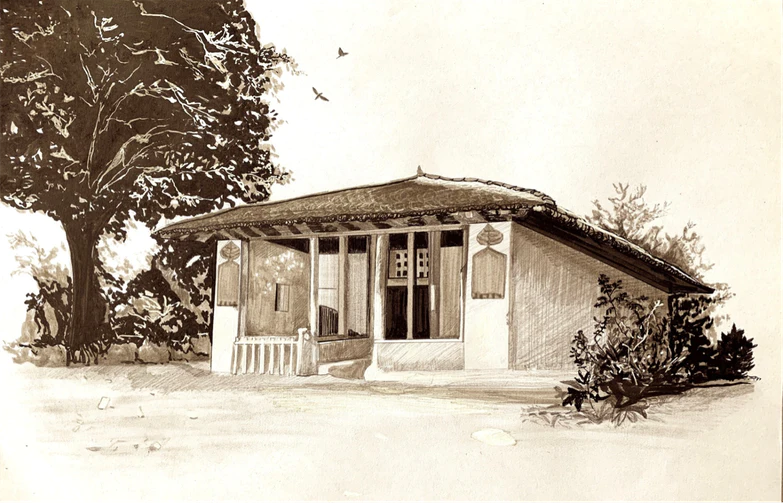 17. The shrine of Shaykh Ṭabarsí. In July 1848, Mullá Ḥusayn received a message from the Báb inviting him to rally his fellow disciples and to proclaim the advent of the Promised One in the province of Mázindarán. Along the way he enrolled those of his fellow believers who were willing to follow him. Because of their allegiance to the new Faith, they were attacked by the population of Bárfurúsh, Mázindarán, and took refuge in the Shrine of Shaykh Ṭabarsí located a short distance from the town, where they built a fort for self-defence. They heroically withstood the assaults of an army that far outnumbered them. In May 1849, they surrendered after a solemn promise of peace was signed by the Commander of the Imperial army, a promise that was totally disregarded. The long battle ended with the massacre of almost all the Bábís. 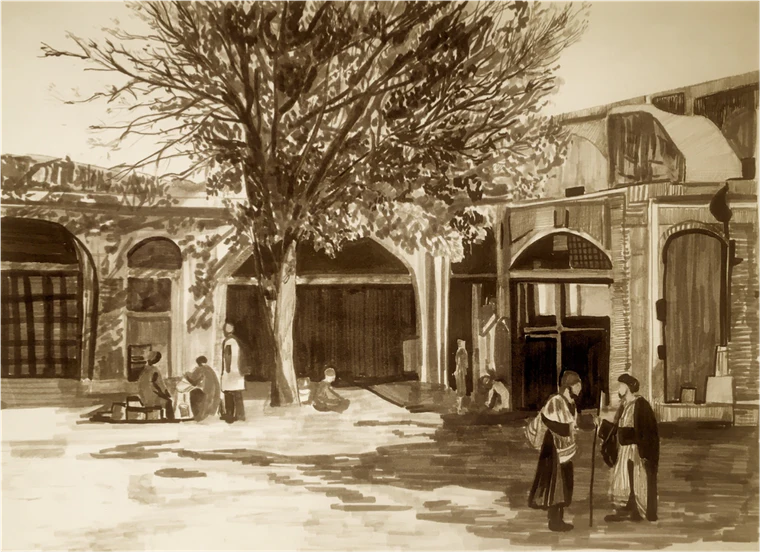 18. Tehran. The Sabzih-Maydán. Many Bábís were slain in this marketplace. First among them were the Seven Martyrs of Tehran. These heroic believers, like their Bábí companions across the country, did not adopt the Islamic practice of kitmán, literally "concealment," which allows a believer to conceal his faith when facing religious persecution. The Seven Martyrs of Tehran accepted with gladness to be martyred.  19. Nayríz. Vaḥíd's house. From 27 May to 21 June 1850, secular and clerical forces joined against the peaceful Bábís of Nayríz, a town in the province of Fárs, to prevent them from professing and spreading their new Faith. The Bábís were led by Siyyid Yaḥyáy-i-Darábí, surnamed Vaḥíd (the peerless) by the Báb, one of the most distinguished theologians of Persia who had been sent by the Sháh to interview the Báb and subsequently embraced His Message. The Báb's followers were ultimately slaughtered by the ruthless forces. 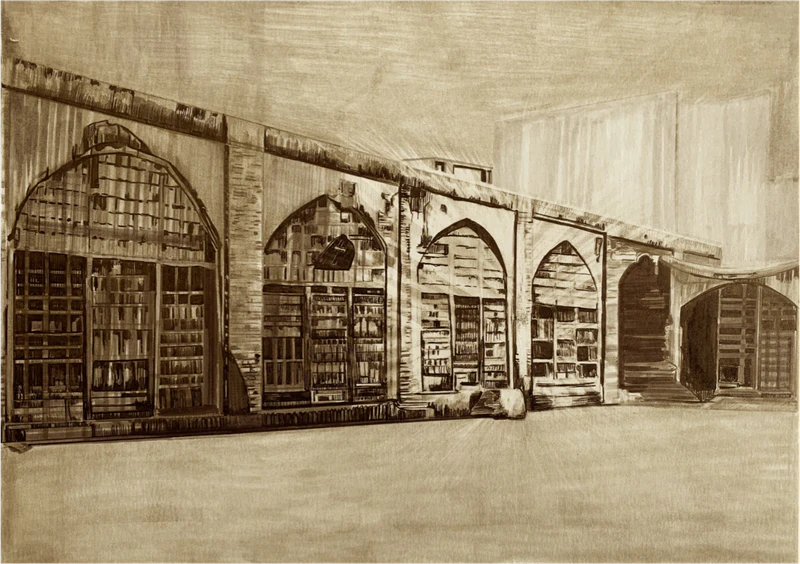 20. Ṭabríz. The Barrack Square. The decision to execute the Báb was made by the Grand Vizier of Náṣiri'd-Dín Sháh. He was alarmed by the growing fame of the Báb, exasperated by the resistance of His followers to the State forces that tried to prevent them from spreading the new Message, and hostile to the spiritual and social renewal that He preached. The Báb emerged unscathed from a first volley of 750 muskets. A second platoon volunteered to replace the first, which had refused to repeat the attempted execution. After His martyrdom, the Báb's remains were rescued by His followers and carefully protected until He was finally laid to rest on Mt. Carmel in 1909.  21. Zanján. The square. From May 1850 to January 1851, the combined forces of the State and the Zanján clergy attacked the followers of the Báb in the city. Courageously led by a scholar, known as Hujjat, who had embraced the new teachings, the Bábís defended themselves valiantly against a brutal enemy but were ultimately killed in a tragic onslaught.  22. Tehran. The Gate of Naw. On August 15, 1852, three young Bábís, blinded by grief after the martyrdom of the Báb as well as of many of their fellow believers, foolishly attempted to take the life of Náṣiri'd-Dín Sháh but failed. A horrific massacre of the Bábís followed. At the Gate of Naw, one of the northern gates of Tehran, the remains of many of the Báb's followers were hung. 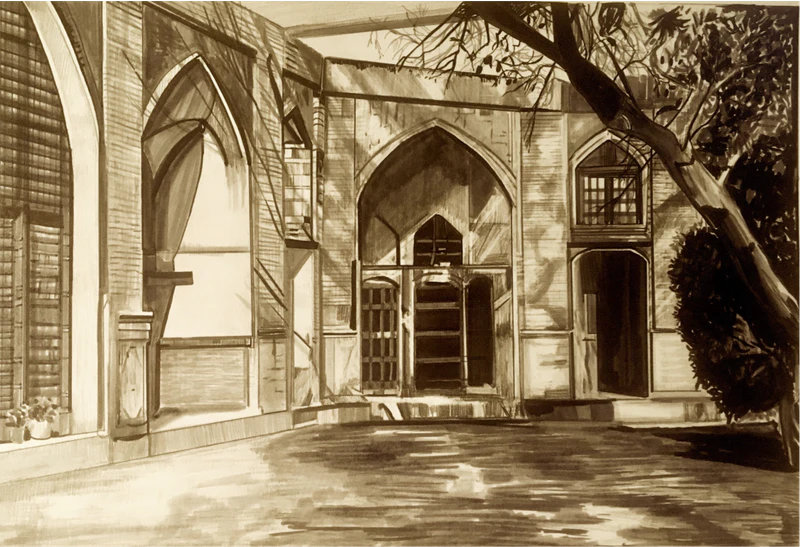 23. Tehran. The Madrisiy-i-Ṣadr, a theological school where Bahá'u'lláh had stayed. Bahá'u'lláh embraced the Message of the Báb in 1844, and immediately became an active supporter of His new Faith. After imprisonment in a Tehran dungeon in 1852, Bahá'u'lláh was exiled to Baghdad. In that city in 1863, He announced to a small group of friends that He was "He Whom God shall make manifest," as promised by the Báb. His followers came to be known as Bahá'ís, and the religion He founded as the Bahá'í Faith. 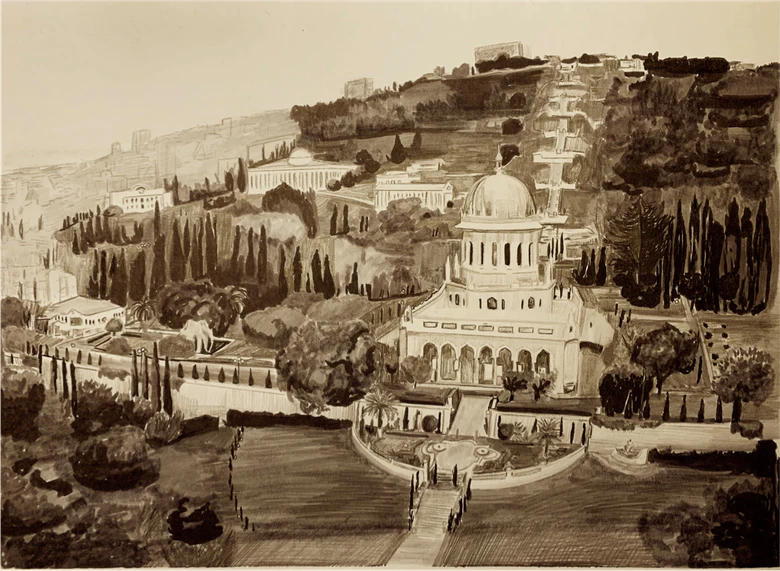 24. Haifa. The Shrine of the Báb, the final resting place of the Prophet-Martyr, is an iconic symbol of hope and peace, surrounded by beautiful gardens and situated along 18 terraces that cascade down the side of Mount Carmel. To the left of the sacred Shrine is the Arc, comprising, from left to right, the International Teaching Centre, the Seat of the Universal House of Justice, the Centre for the Study of the Sacred Texts, and the International Archives Building.  25. Haifa. The cypress grove beside the spot designated by Bahá'u'lláh, in 1891, for the remains of the Báb. Today, the Shrine of the Báb stands on that very spot.
|
| METADATA | |
| Views | 2025 views since posted 2020-09-25; last edit 2021-01-26 21:09 UTC; previous at archive.org.../savi_bab_pictorial_essay |
| Permission | author |
| Share | Shortlink: bahai-library.com/5367 Citation: ris/5367 |
|
|
|
|
Home
search: Author Links |
|